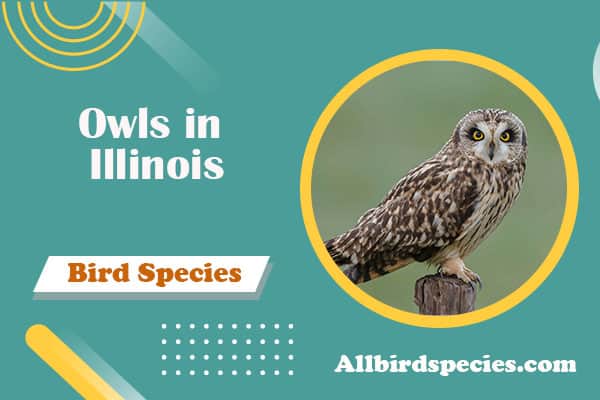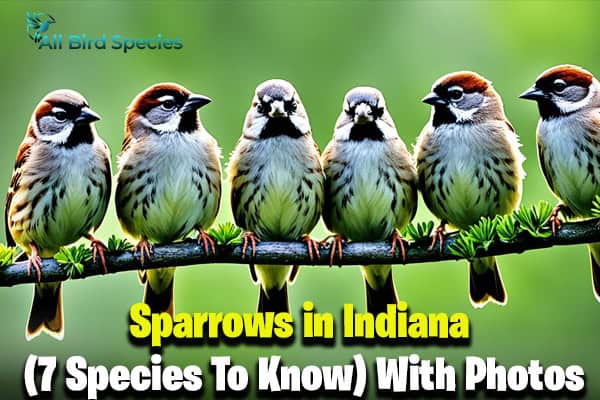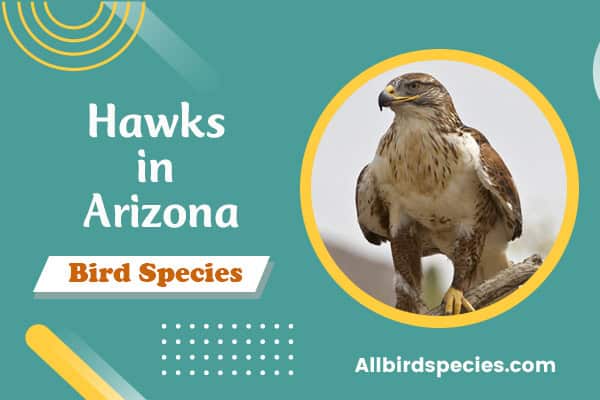Spotting 8 Owls In Illinois With Pictures (ID Guide)
Illinois is a great place to see owls. Out of the 19 kinds of owls in the United States, you can find 9 types right here! That’s pretty cool because it means Illinois has a lot of different owls. These owls come in all sorts of sizes and shapes, and they act differently too. Some of them are easy to find, but others are more special and live in the woods.
Now, let’s talk about these owls. They’re kind of shy and like to stay hidden in the trees, but if you hear their spooky sounds, it’s really exciting. It means you might get to see them if you’re on a birdwatching adventure.
In this article, we’re going to learn about the 9 owl types in Illinois. We’ll look discuss what makes each one special, where they like to live, and I’ll give you some hints on how to spot them. So, let’s get started and see what we can discover about these amazing owls!
Here We’ll Learn About 9 Different Types Of Owls in Illinois!!
1. Great Horned Owl
- Scientific name: Bubo virginianus
- Life span: 25 – 50 years
- Size: 43 to 64 cm (17 to 25 in)
- Weight: 1200 to 1600 g (2.64 to 3.52 lbs)
- Wingspan: 91 to 153 cm (3ft 0in to 5ft 0in)
Firstly, the Great Horned Owl can live in many places like deserts, swamps, grassy areas, cities, and forests. They can be found all over North America and even as far as Brazil. These owls are night creatures, which means they’re active when it’s dark and sleep during the day. They have special brown feathers that help them blend in with their surroundings, which is called camouflage. The “horns” on their head aren’t real horns; they’re just long feathers that might help them communicate with other owls, but scientists are still figuring out how.
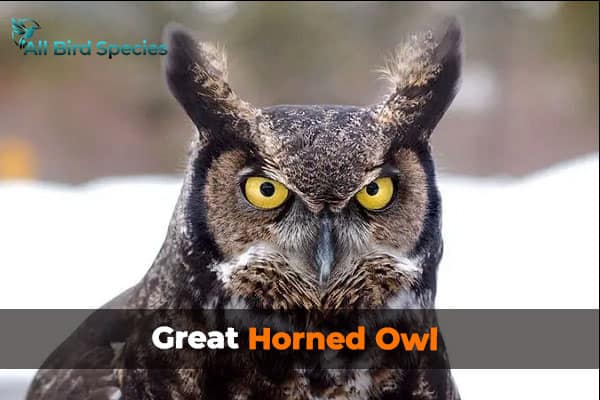
Next, these owls start looking for a partner early in the year, around January. The boy owl picks a place for the nest and tries to impress the girl owl by flying around it and making noise. They usually take over nests that other big birds left behind instead of making their own. They’re not picky about where they live; they can use caves, big plants, or even cliffs to set up their home.
Also, the Great Horned Owl is a really good hunter. In a place like Illinois, they eat different things depending on the time of year and what they can find. They mostly eat small animals like voles, mice, and rabbits, and sometimes birds like ducks, pigeons, and pheasants. If they need to, they’ll eat bugs, snakes, frogs, and even bigger animals like skunks, raccoons, and porcupines. They hunt at night using their sharp claws and beak to catch their dinner.
Remember, these owls are important for the environment because they help control the population of the animals they eat. They’re also really interesting to learn about!
2. American Barn Owl
The American Barn Owl is a type of owl that likes to be awake at night and hides during the day in places like hollow trees or thick bushes. This owl is part of a group that includes the Western and Eastern Barn Owls. It has a white face, chest, and belly, and the top part of its body and wings are light brown. Its face looks so unique that some people have made up stories, saying it’s magical or from another world.
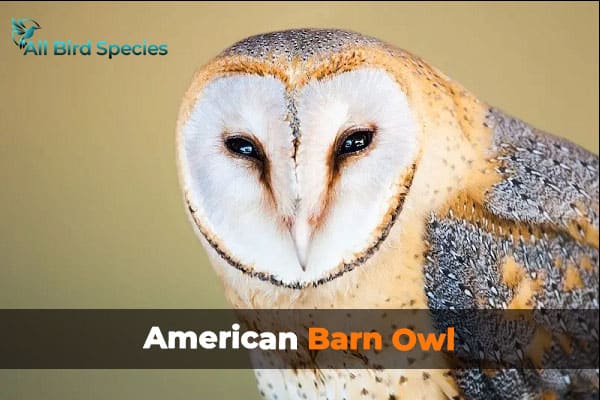
Now, when it’s time to have baby owls, which is usually from March to June, American Barn Owls stick with just one partner for their whole life. The boy owl looks for a good place to live, like a box made for nesting, a hole in a tree, or the side of a cliff. He flies around to show that it’s his space. When the girl owl comes, he does a special dance, flying and diving around her, and then they have their babies.
In places like Illinois, these owls mostly eat small animals like voles, shrews, and mice. They hunt only when it’s dark, using their ears that are not even to listen for their food. They can catch their prey without seeing it, and because they’re so active, they need to eat a lot compared to other owls their size.
Sometimes, American Barn Owls in Illinois will also munch on insects and little birds, but not as much. Since Illinois has lots of farms, these owls help out by eating pests like rats and mice that come to the fields.
3. Eastern Screech-Owl
The Eastern Screech-Owl is pretty cool because it doesn’t mind living near people and can be found in many places, from the eastern parts of the United States all the way down to Mexico. This owl has two main looks: in the south, they’re more reddish, and in the north, they’re more greyish. The color of the trees and forests where they live might be why they have these different colors.
Now, these owls usually like to be alone, but during April, which is their mating season, they hang out in pairs. After they mate, they find a cozy hollow tree trunk in a dark forest to make their nest. They usually stick with the same partner for life, but sometimes the boy owl will have more than one mate. If that happens, the new girl owl will take over the nest.
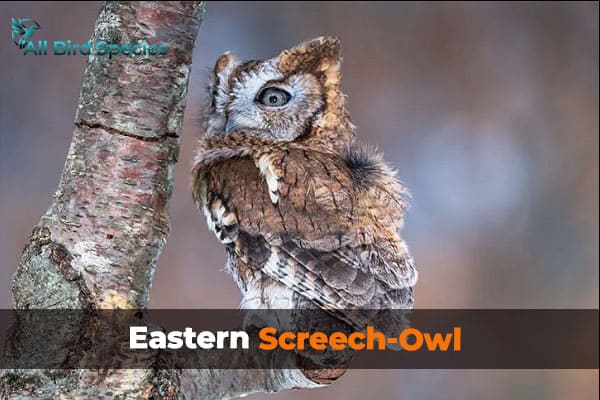
The Eastern Screech-Owl eats lots of different things, which is why it’s called a generalist predator. In Illinois, they mostly eat small animals like voles, mice, shrews, and rats. They also like to snack on insects, especially beetles and moths, and other small creatures like spiders, worms, and snails.
Besides that, they eat little reptiles, birds, and frogs. Sometimes, they even eat fruits and berries. They do all their hunting at night and can find their food just by hearing it. They eat their food whole and later spit out the parts they can’t digest, like fur, feathers, and bones, in little bundles called pellets.
4. Long-eared Owl
The Long-eared Owl is a master of hide-and-seek with its brown and black feathers that help it blend right into pine trees. This kind of owl is one of the most common ones around the world. Even in thick forests, you can hear its call from up to a mile away, so it’s a sound many people recognize when they’re out in nature.
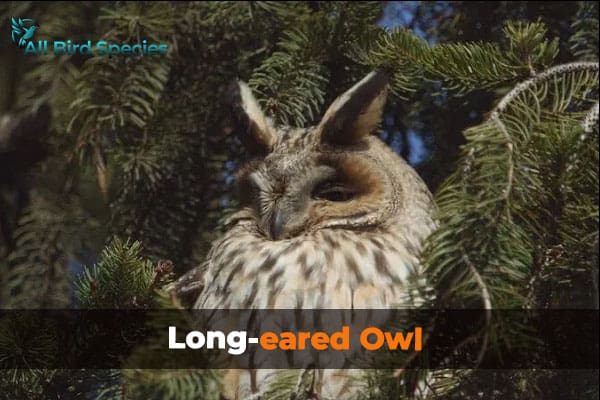
Now, when it’s time to start a family in March, the Long-eared Owl sticks with just one partner. The boy owl makes his home area known by singing and making a clapping sound with his wings. Meanwhile, the girl owl looks for the perfect spot to settle down. They don’t make their own nests; instead, they often move into nests that hawks left behind or find a cozy spot in an old tree.
So, the Long-eared Owl has its own special way of living, from the way it hides to the way it finds a home, making it a unique and interesting bird to learn about.
5. Short-eared Owl
The Short-Eared Owl is a kind of owl that you can find almost everywhere in the world. It’s pretty common. This owl has a small, black beak and its body is covered with brown spots. It has stripes on its tail and wings, and the feathers on its chest are brown with a lighter color on its belly. Now, here’s something interesting: unlike most owls, you can often see the Short-Eared Owl out hunting when the sun is up.
Firstly, let’s talk about how these owls live when it comes to having families. They don’t stick with just one partner for their whole lives. Instead, they have a different partner each year during the breeding season, which usually starts in March. Also, these owls are pretty social—they like to hang out in groups, and they make their homes on the ground where there aren’t many tall plants, like in open fields or flat, cold lands.
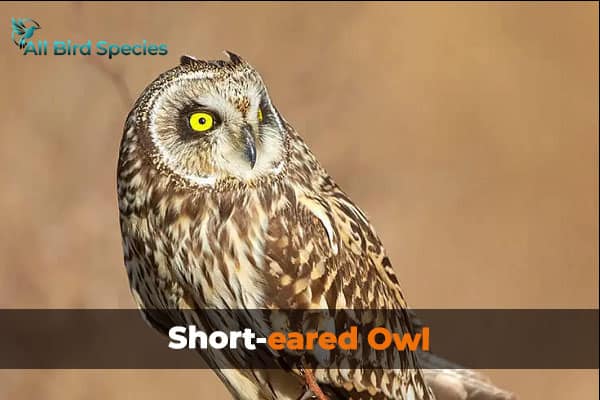
Next, what do they eat? Well, in places like Illinois, they mostly eat little animals like voles and shrews, which are types of small rodents. They also eat other little creatures like rabbits, weasels, and hares. But that’s not all—they also munch on tiny reptiles, frogs, bugs, and even some small birds like sparrows and larks.
Lastly, the Short-Eared Owls are active hunters. They fly close to the ground in open spaces like fields and meadows, looking for something to eat. They’re pretty good at making the most of whatever food they can find around them. They’re not picky and can adjust to different places and whatever food is available. This makes them very clever at surviving in many different environments.
6. Northern Saw-whet Owl
The Northern Saw-Whet Owl is a tiny, hard-to-find bird that lives in North America. It’s a bit of a mystery bird. It has a cute, round face that’s mostly white with some brown lines, a dark-colored beak, and bright yellow eyes. Its stomach is light with some brown, and its back is darker brown with little white dots. People think it got its name because its call sounds like the noise of sharpening a saw with a sharpening stone.
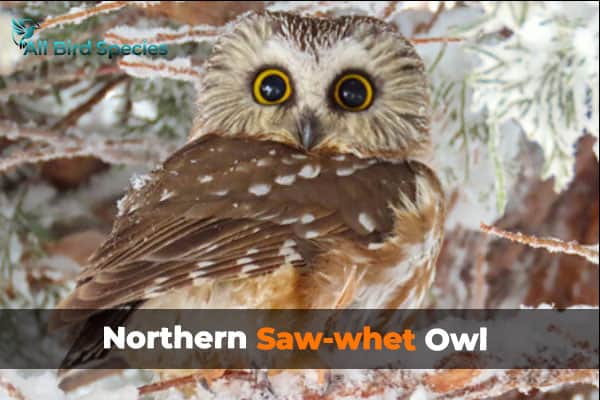
Now, let’s talk about the owl’s love life. These owls don’t stay with the same partner forever. Instead, they find a new partner every year when it’s time to have babies, which is usually in March. But if there’s a lot of food around, the boy owls might have more than one girlfriend at the same time. They like to make their homes in holes that woodpeckers have left in trees or in boxes that people put up for them.
When it comes to food, these owls in Illinois mostly eat tiny animals like voles, mice, and shrews. Sometimes they’ll snack on bugs, birds, and other small critters too. They’re pretty good at grabbing whatever food they can find. They hunt mostly at night, using their sharp claws and beak to catch and eat their food. Even though they’re small, they can squeeze into tight spots and can even catch things that are bigger than they are.
7. Snowy Owl
The Snowy Owl is a bird that’s easy to spot because it’s very white and lives in the cold Arctic. It’s one of the whitest animals you can find! The boy owls are usually whiter than the girl owls, which have some dark feathers too.
Now, these owls are different from others because they don’t sleep all day. They can be awake and active during the day or night. This might be because where they live, the days can be super long or super short, depending on the season. They also travel a lot, going from where they have babies to where they spend the winter, and this place can change every year.
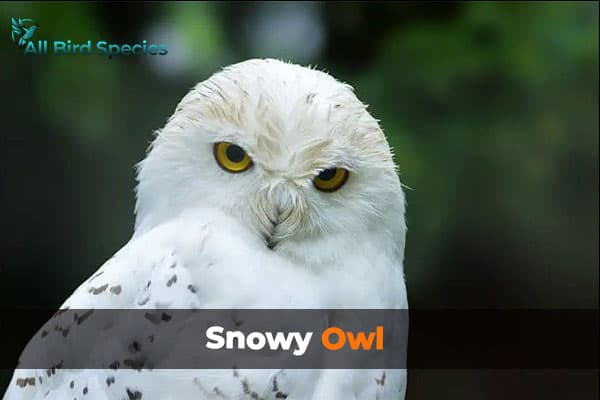
In April, the Snowy Owl goes back to the Arctic, where it’s really cold and flat, to start its family. The boy owl picks a place, does some cool flying tricks, and sings to get the attention of a girl owl. If a girl owl likes him, he gives her food and shows her where he thinks they should have their babies. But they don’t make a nest like other birds; the girl just makes a little dent in the ground for her eggs.
When it comes to food, in places like Illinois, Snowy Owls like to eat small animals like lemmings, voles, and mice. They also eat other small animals, birds, and sometimes fish. They’re not picky eaters and will hunt for whatever food they can find, depending on what’s around at that time of year.
8. Northern Hawk Owl
The Northern Hawk Owl lives in the northern parts of North America. It behaves a bit like a hawk because it likes to sit up high on trees or poles, just like a hawk does. This owl has dark brown feathers with white spots on some parts of its body, and its belly is also white. Its face is white with a black border, and it has a long tail that looks like a hawk’s.
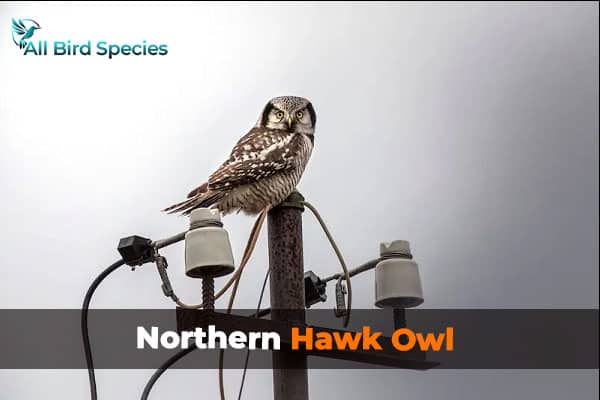
When it comes to family, the Northern Hawk Owl is a bit like a monogamous couple. That means it stays with one partner for just one breeding season, which usually starts in March. After they mate, they build a nest. Unlike most other owls, they don’t borrow someone else’s nest; they make their own.
Now, let’s talk about food! In Illinois, these owls like to eat small animals like voles, mice, and shrews. They also snack on small birds, insects, and other tiny creatures. They’re not picky eaters—they’ll catch whatever they can find, depending on the time of year and what’s available. They do most of their hunting during the day, using their sharp claws and beak to catch and kill their prey. Sometimes, they even hunt on the ground and can catch prey bigger than themselves. During winter in Illinois, you might spot them hunting over open fields, grasslands, and wetlands.
While the Northern Hawk Owl isn’t globally threatened, its population has gone down in North America. Pesticides and rodenticides (which are chemicals used to kill rodents) have harmed their food, and habitat loss has also affected their numbers.

